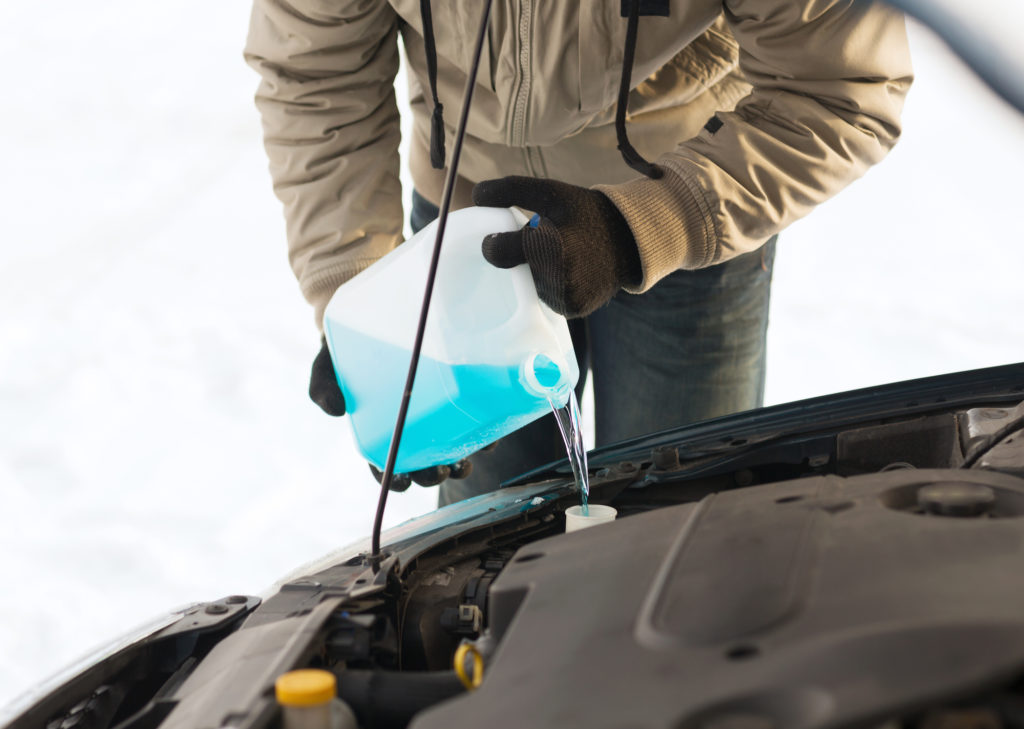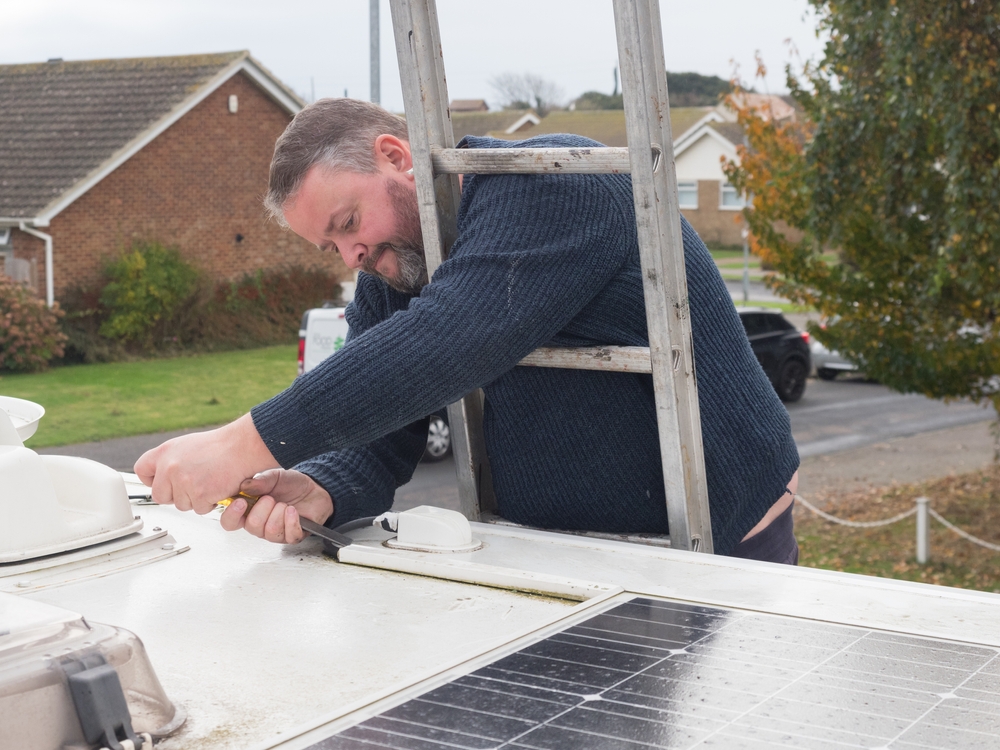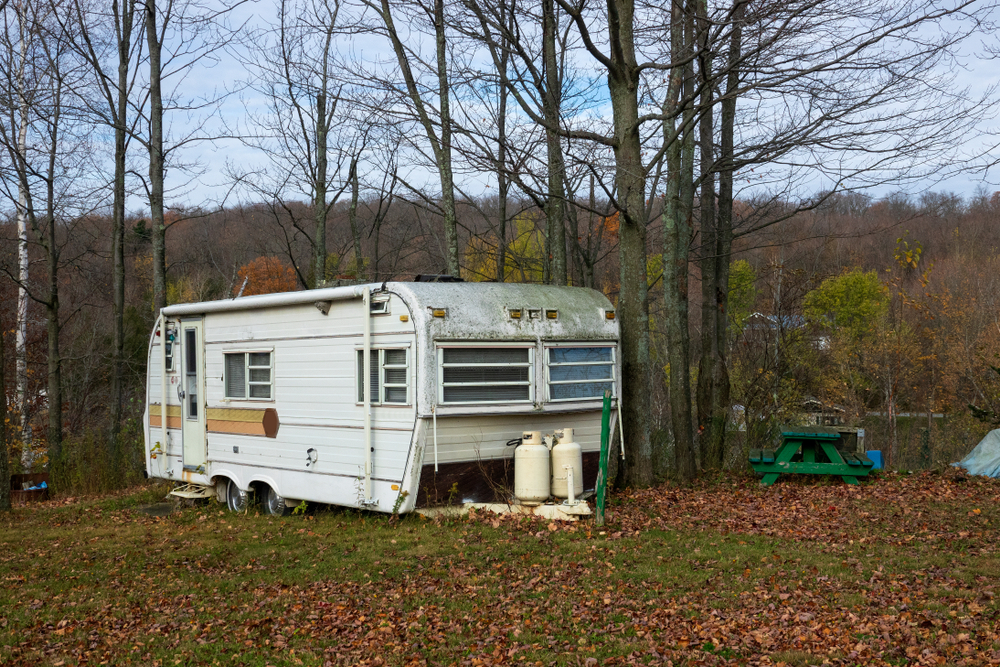As the temperatures drop and winter sets in, it’s important to make sure your RV is ready for cold-weather adventures. Whether you’re planning a winter getaway or just want to ensure your RV is protected from the chill, taking the right steps to winterize it will help keep everything running smoothly. Here are 15 practical tips to prepare your RV for winter travel, so you can enjoy the season without worrying about the cold.
Contents
Check and Replace the Antifreeze

Antifreeze is essential for protecting your RV’s plumbing system from freezing. Make sure you use RV-specific antifreeze, which is non-toxic and safe for potable water systems. Drain any old antifreeze and replace it with fresh, ensuring that the entire plumbing system is properly protected for the winter months.
Drain Water Systems

Draining all the water from your RV’s pipes, fresh water tank, and water heater is crucial. Any remaining water left in the system could freeze, expand, and crack your pipes. Run the water pump to expel any remaining water and open all faucets, including the shower and toilet valves.
Inspect and Seal All Vents

Cold air can sneak in through poorly sealed vents, so inspect all exterior vents, including the furnace, refrigerator, and water heater vents. Apply weatherstripping or sealant to ensure that no cold air leaks in, which can affect the interior temperature and lead to freezing pipes.
Cover Windows and Skylights

Heat loss through windows and skylights can significantly lower the internal temperature of your RV. Use insulating window covers, thermal curtains, or even bubble wrap to provide an extra layer of insulation to prevent cold drafts.
Protect Your Battery

Cold weather can significantly reduce your RV battery’s performance. Remove the battery and store it in a warmer area if possible, or insulate it with a battery blanket designed for cold weather. This will help maintain its charge and longevity during the winter months.
Inspect Tires for Cold-Weather Readiness

Before hitting the road, check your RV’s tires to ensure they are properly inflated and rated for winter conditions. Cold weather can cause tire pressure to drop, so inflate them to the recommended pressure and consider using tire covers to protect them from the elements when parked.
Apply RV Roof Sealant

Inspect your RV’s roof for any cracks, leaks, or damage. Apply an appropriate sealant to any problem areas to prevent water from getting inside the RV during rain or snow. A well-maintained roof is vital for ensuring your RV stays dry and safe during winter trips.
Use Tire Covers

When not in use, tire covers can protect your RV’s tires from cracking or degrading due to exposure to cold temperatures and UV rays. These covers help extend the lifespan of your tires and ensure that they perform well when you’re ready to travel.
Clean the Interior Thoroughly

Before storing your RV for the winter, give it a thorough cleaning. This includes vacuuming carpets, wiping down surfaces, and cleaning out the refrigerator and cupboards. Any food scraps or moisture left behind can lead to unpleasant odors, mold, or pests.
Store Propane Safely

Propane tanks should always be stored upright and in a well-ventilated area. If your RV will be stationary for a while, consider removing the propane tanks and storing them in a safe, sheltered place to avoid potential leaks or freezing during extremely cold weather.
Check and Replace Weatherstripping

Inspect the weatherstripping around doors and windows for signs of wear or damage. Replace any broken or cracked seals to ensure that warm air stays inside, and cold air or moisture doesn’t seep in. This will help maintain a comfortable temperature inside the RV and prevent drafts.
Empty the Black and Gray Water Tanks

Before storing your RV, empty both the black and gray water tanks completely. Leftover waste can freeze and damage the tanks, valves, and pipes. After draining, you may also want to add RV-specific antifreeze to prevent any residual waste from freezing inside the tanks.
Use a Dehumidifier

Moisture buildup inside your RV can cause mold, mildew, and rust. Using a dehumidifier during winter storage will help keep the interior dry and prevent condensation. If you don’t have a dehumidifier, you can also use moisture-absorbing products like silica gel packs or DampRid.
Seal Up Exterior Holes

Inspect the RV’s exterior for small holes or gaps, especially around areas where wiring or pipes enter. Seal up any cracks or holes with silicone caulk to prevent cold drafts and moisture from getting in.
Install a Furnace Vent Cover

A furnace vent cover helps prevent snow or ice from clogging the furnace vent while you’re parked for winter. It also helps keep out cold air and prevents debris from entering the vent, which can affect the efficiency of your heating system.
This article originally appeared in MyCarMakesNoise.
More from MyCarMakesNoise
16 Timeless Tractors That Are Treasures for Collectors

Antique tractors hold a special place in the hearts of collectors, combining history, innovation, and nostalgia. These machines not only revolutionized farming but also became symbols of agricultural heritage. Read More
13 Innovative Shipping Trucks Revolutionizing Global Logistics

The global logistics industry is evolving rapidly, and innovative shipping trucks are playing a huge role in driving that change. These trucks are equipped with advanced technology, sustainable features, and smarter designs, making freight transport more efficient and eco-friendlier. Read More
25 Most Fuel-Wasting Cars Ever to Hit the Road

Some vehicles may look great or offer impressive performance, but when it comes to fuel efficiency, they fall short. In fact, some cars and trucks are notorious for wasting gas and costing drivers a fortune at the pump. Read More














